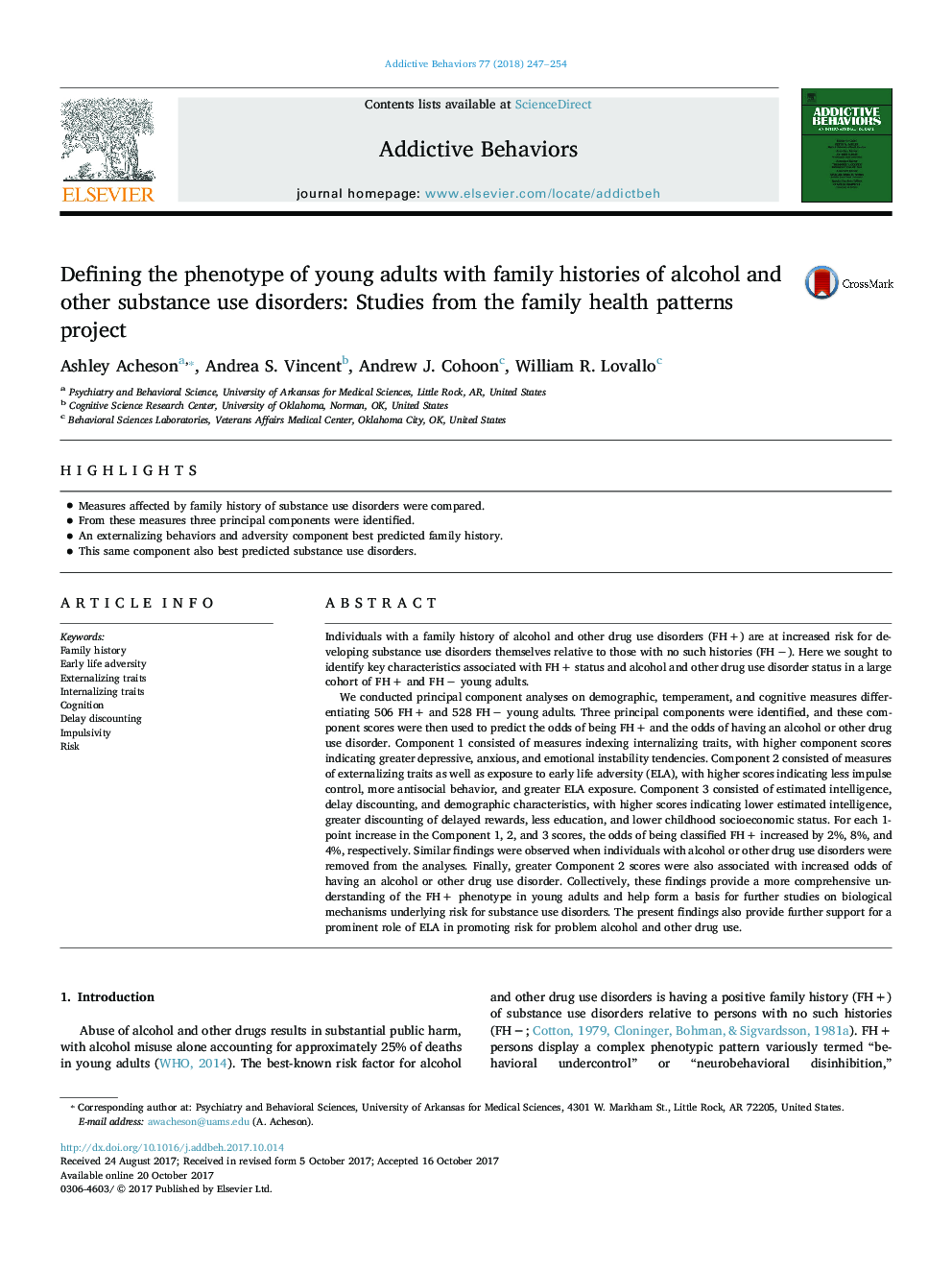| کد مقاله | کد نشریه | سال انتشار | مقاله انگلیسی | نسخه تمام متن |
|---|---|---|---|---|
| 7259540 | 1472494 | 2018 | 8 صفحه PDF | دانلود رایگان |
عنوان انگلیسی مقاله ISI
Defining the phenotype of young adults with family histories of alcohol and other substance use disorders: Studies from the family health patterns project
ترجمه فارسی عنوان
تعریف فنوتیپ بزرگسالان جوان با سابقه خانوادگی الکل و سایر اختلالات مصرف مواد: مطالعات از الگوهای سلامت خانواده پروژه
دانلود مقاله + سفارش ترجمه
دانلود مقاله ISI انگلیسی
رایگان برای ایرانیان
کلمات کلیدی
سابقه خانوادگی، ناراحتی زودرس، صفات خارجی، صفات داخلی، شناخت، تخفیف تاخیر، تکانشی، خطر،
موضوعات مرتبط
علوم زیستی و بیوفناوری
علم عصب شناسی
علوم اعصاب رفتاری
چکیده انگلیسی
We conducted principal component analyses on demographic, temperament, and cognitive measures differentiating 506 FHÂ + and 528 FHÂ â young adults. Three principal components were identified, and these component scores were then used to predict the odds of being FHÂ + and the odds of having an alcohol or other drug use disorder. Component 1 consisted of measures indexing internalizing traits, with higher component scores indicating greater depressive, anxious, and emotional instability tendencies. Component 2 consisted of measures of externalizing traits as well as exposure to early life adversity (ELA), with higher scores indicating less impulse control, more antisocial behavior, and greater ELA exposure. Component 3 consisted of estimated intelligence, delay discounting, and demographic characteristics, with higher scores indicating lower estimated intelligence, greater discounting of delayed rewards, less education, and lower childhood socioeconomic status. For each 1-point increase in the Component 1, 2, and 3 scores, the odds of being classified FHÂ + increased by 2%, 8%, and 4%, respectively. Similar findings were observed when individuals with alcohol or other drug use disorders were removed from the analyses. Finally, greater Component 2 scores were also associated with increased odds of having an alcohol or other drug use disorder. Collectively, these findings provide a more comprehensive understanding of the FHÂ + phenotype in young adults and help form a basis for further studies on biological mechanisms underlying risk for substance use disorders. The present findings also provide further support for a prominent role of ELA in promoting risk for problem alcohol and other drug use.
ناشر
Database: Elsevier - ScienceDirect (ساینس دایرکت)
Journal: Addictive Behaviors - Volume 77, February 2018, Pages 247-254
Journal: Addictive Behaviors - Volume 77, February 2018, Pages 247-254
نویسندگان
Ashley Acheson, Andrea S. Vincent, Andrew J. Cohoon, William R. Lovallo,
